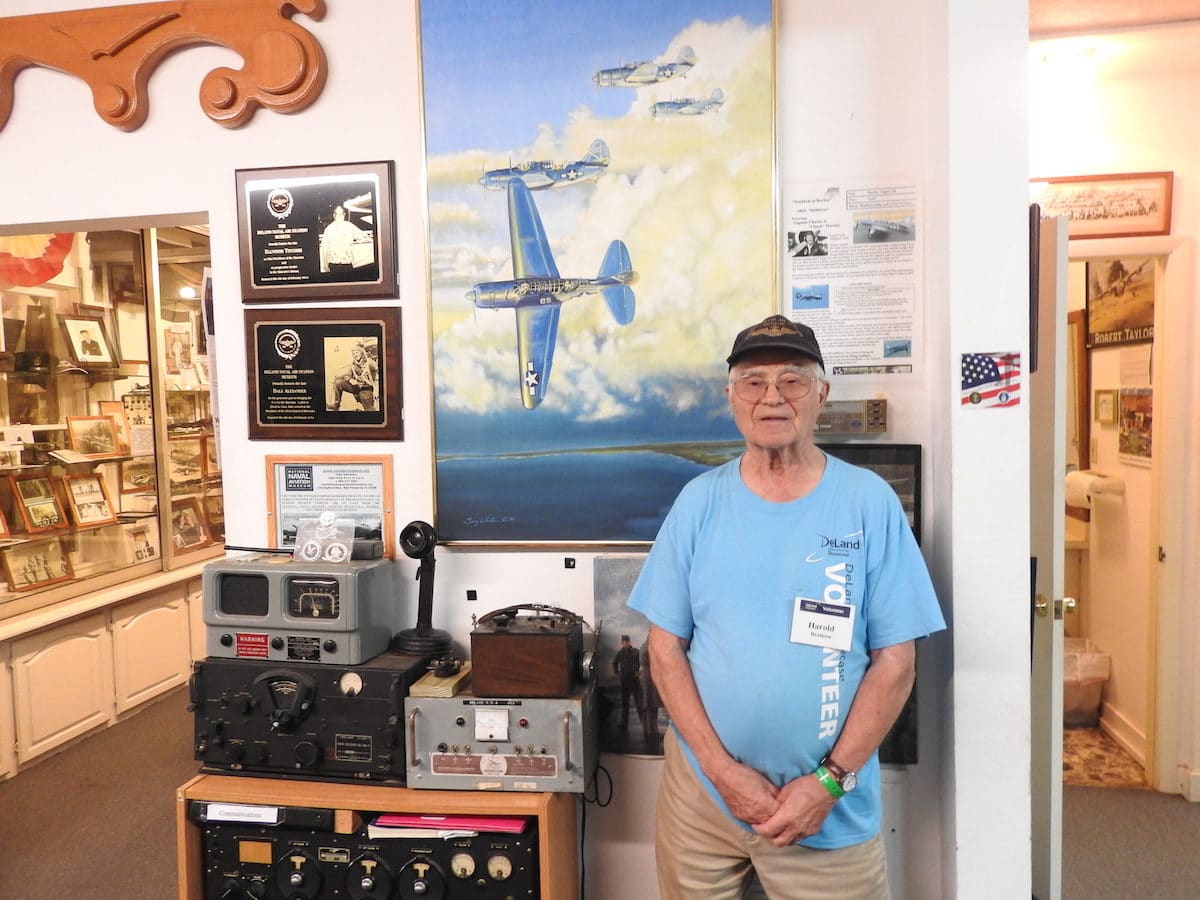Unless you are a frequent visitor to DeLand Municipal Airport (KDED) in DeLand, Florida, you might never know the DeLand Naval Air Station Museum is there.
If you fly in it is easy to miss, but if you drive to the airport you might be lucky enough to stumble on it. It doesn’t look that big from the road, but if you stop and go in you will find the grounds extend back from the road quite a bit. There’s also a large restoration hangar in the museum’s back yard.
Out front is a small building with a huge Navy anchor mounted on a pedestal and a F-14 Tomcat Jet fighter beside the building.

Why is there a Naval Air Museum at the Deland Municipal Airport? During World War II the airport was a Naval Air Station training Naval personnel to fly.
They started with the old Stearman biplane, then moved up to the SNJ or AT-6 Texan, which was the Army Air Force version. They ended up flying the Navy Douglas Dauntless SBD Dive Bomber. So, Deland Municipal Airport started out as a Naval Air Station training dive bomber pilots who eventually operated off aircraft carriers.
Not many of these Douglas SBD bombers survived World War II, so when you go to a warbird air show today you do not often see one.
The museum’s mission is to preserve as much of this airport’s history with the Navy as possible. It also has become a rich repository of World War II books, aviation information, radios, flight equipment, declassified documents, and other artifacts. The museum also has a lot of information on the Korean and Vietnam wars.

When you go out back you will find a 1950s era T-33 jet trainer. Walk even further to the restoration hangar and find a World War II Grumman TBF Avenger in the process of being restored.
There you will also find a haze gray version of the old Willys Jeep. Hanging from the ceiling is a Curtis Jenny painted in traditional Navy colors.
The museum also has a huge Naval vessel on the property. It is a wooden PTF-3 motor torpedo boat that was used in the Vietnam war. This is not just any PT boat — it is the one that took part in the Tonkin Bay battle that caused President Johnson to send more troops to Vietnam. The museum even has the declassified orders and mission designations that prove that boat took part in the battle. How cool is that?

This museum opened in 1995 and is listed in the National Register of Historic places.
I was lucky enough to meet the man who is the spark plug for this museum. His name is Harold Bradeen, 84, and he is an archivist. Even though he was in the US Army, not the Navy, they ought to give him a Navy medal of some type for the work he has done to hold this museum together and keep it moving ahead.

All you have to tell Harold is that you would like to research something about World War II or Naval aviation and he will lead you to the correct books you need right there in the museum.
As an example of how complete a shop he runs, I commented on some World War II radio equipment that was on display, some of which I had owned as a ham radio operator that I had purchased years ago on the war surplus market. He immediately reached down and pulled out a loose-leaf book he had put together with all the information he had found about those radios, including service manuals.
I recommend stopping by to take a look at this little museum if you are ever in the area. It is a place you could spend several interesting hours if you have an interest in military history.
The DeLand Naval Air Station Museum is open Wednesday through Saturday, noon to 4 p.m. and Sunday 1 p.m. to 4 p.m. Entrance is free, donations are accepted.

NAS DeLand was later the home of Florida Military School from 1956-1971. The school used two barracks buildings, the O Club, the hospital building for classrooms and another building for administration, the original purpose of which I forget. There was a gymnasium and courts for handball and tennis. East of the barracks were riding stables and a rifle range. A parade field was used for formations and dress reviews. The school built a dining hall that is still in use as a shop building and a swimming pool. The barracks are gone. Former students number over 1,300 individuals; annual enrollments averaged about 300 until fallout from the Vietnam War made military schools unpopular.
For more information on Florida Military School, look on the web at http://www.fms-assn.org